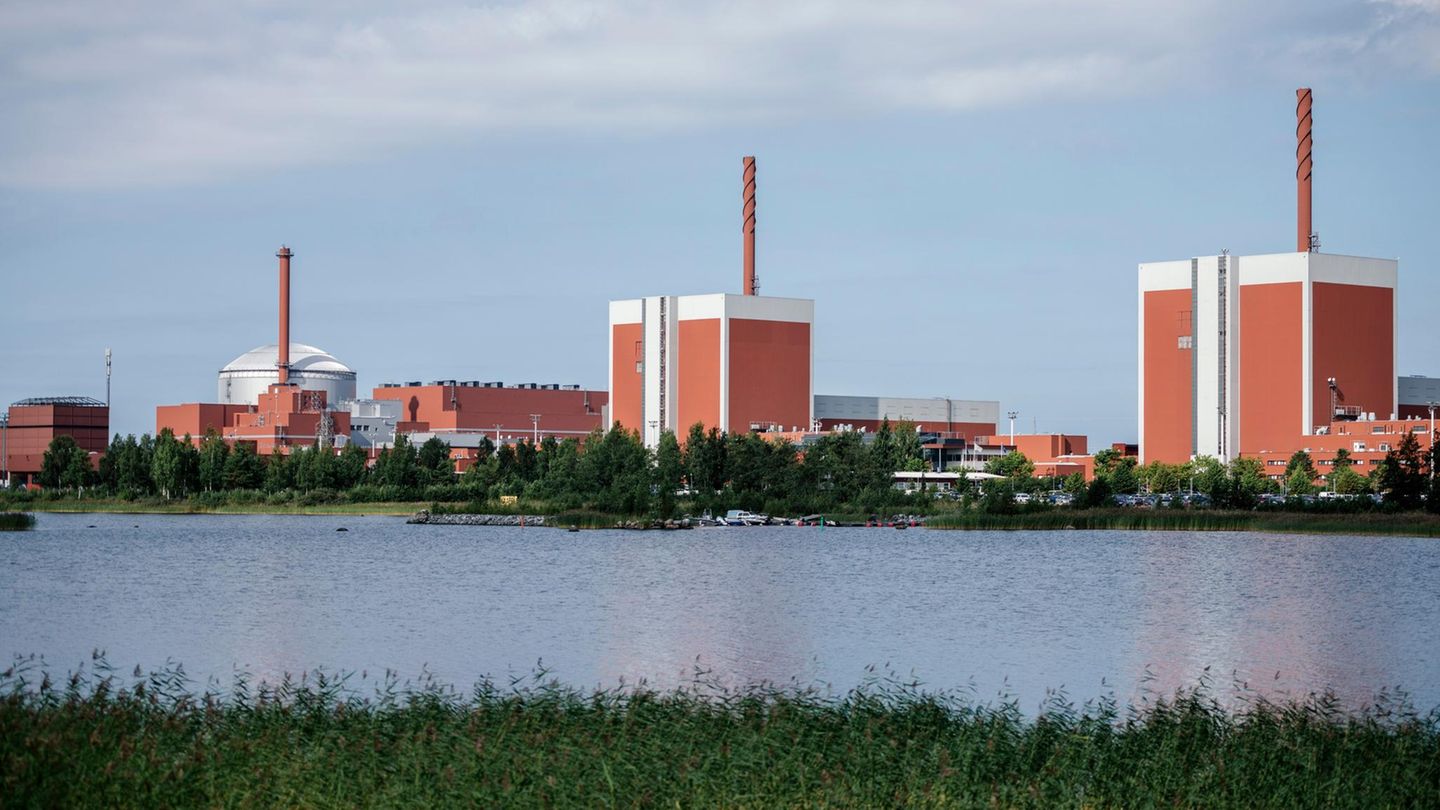The EU Commission plans that investments in new nuclear power plants should be classified as sustainable. That caused protests in Germany. Finland, on the other hand, relies on nuclear power for climate neutrality. Even climate activists there think this is a good idea.
Germany says goodbye to nuclear power: At the turn of the year, the three nuclear power plants in Brokdorf, Grohnde and Gundremmingen were shut down. The three very last German nuclear power plants near Landshut, Emsland and Heilbronn are to follow at the end of the year. But now plans by the EU Commission are causing a stir. Because the plans indirect subsidies for modern nuclear and gas power plants.
Specifically, the plans provide that planned investments in new nuclear power plants can be classified as sustainable if the systems meet the latest technical standards and a specific plan for a disposal facility for high-level radioactive waste is submitted by 2050 at the latest. In addition, it should be a condition that the new facilities receive a building permit by 2045.
Finland is positive about nuclear power
The Commission’s plans cause horror among environmentalists and nuclear opponents. At the weekend, Greenpeace and Deutsche Umwelthilfe accused the Brussels authority of sending a completely wrong signal and undermining their own climate targets. The federal government also criticized it. Labeling the “high-risk technology” nuclear energy as sustainable is wrong, said Federal Economics Minister Robert Habeck (Greens). Nuclear waste will pollute the EU for centuries. Federal Development Minister Svenja Schulze (SPD) said: “Nuclear power is too risky, too expensive and too slow to help the world with climate protection.”
You see it differently in Finland. The country wants to become climate neutral by now, but is relying on nuclear power – and is even building new reactors. For the Finnish government, nuclear power plays an important role in its climate and energy strategy. The “CO2-neutral production and its use” namely improve the security of the power supply. One of them states that, alongside renewable energies, nuclear power is an important option for reducing CO2. As early as the 1980s, when the first reactors were connected to the grid, emissions of climate-damaging gases in Finland had been significantly reduced.
“Based on our many years of experience, we believe that nuclear power can be used as an interim solution for decades to come, if the power plants are carefully built and maintained, and if safety is taken care of,” said the Finnish Prime Minister at the time, Antti Rinne.
Public opinion on nuclear power is also largely positive in Finland. A 2010 poll found that 48 percent of the Finnish population had a positive attitude towards nuclear power, while 17 percent had a negative opinion. Another survey from 2014 found that 41 percent were in favor of nuclear power and 24 percent were against it.
Fridays For Future Finland: Better nuclear than coal
Even the Finnish branch of Fridays For Future is open to nuclear energy. “Nuclear power is not a perfect alternative, but its emissions are low. In our view, it is carbon dioxide emissions that pose a greater threat than nuclear waste and that raise the temperature of the planet. So we are ready to accept nuclear power as part of the energy mix,” writes the offshoot in one on one, including Greta Thunberg and Luisa Neubauer, in which they speak out against the taxonomy in the EU, i.e. the classification of sustainable economic activities, of nuclear power. The Finnish climate protectors emphasize, however, that fossil gas does not belong in the taxonomy of the European Union and “should by no means be classified as a sustainable energy source”.
It is not the time to completely exclude a low-emission energy source, according to Finland’s Fridays For Future. “Rather, we must use all available means to fight the climate crisis. Resistance to nuclear power will complicate and add to what is already an enormous task. If we are to stop global warming below 1.5 degrees, we will need all possible means, including that Nuclear power to achieve that goal. “
Nuclear power is neither unproblematic nor a “panacea”, but it is better “to use this low-emission source of energy than to jeopardize the future of the entire planet”.
Olkiluoto 3: New reactor with problems
There are currently two nuclear power plants in Finland, each with two reactors connected to the grid: the Loviisa nuclear power plant east of the capital Helsinki and the Olkiluoto nuclear power plant, northwest of Helsinki. Loviisa went into operation for the first time in 1977, Olkiluoto a year later. As of 2019, 35 percent of Finland’s electricity was generated using nuclear power.
A fifth reactor (Olkiluoto 3) is in the implementation phase, and a building permit application for a sixth reactor has been submitted to the government. The aim is to bring the share of nuclear power in the energy mix to a good 60 percent and put an end to coal energy.
Olkiluoto 3 is scheduled to go into operation this year with an output of around 1,600 megawatts. That would be more than half of what the four previous reactors in the country put together. But Olkiluoto 3 developed into a problem reactor early on. Construction began. The cost of the project was estimated at around three billion euros, but quickly got out of hand. Time and again there were delays. In 2015 it was reported that the new reactor block was estimated to be more expensive. It was not until March 2021 that the Finnish nuclear supervisory authority granted approval for the loading of fuel, which means that the power plant is considered completed. On December 21st, the reactor reached its normal operating status for the first time.
Another nuclear power plant in planning
Olkiluoto 3 is a so-called EPR, a pressurized water reactor of the third generation, which was developed by the French companies Framatome and Électricité de France and Siemens. The new Finnish reactor is the first EPR in Europe. With the new reactor technology, France wants to replace its previous, partly outdated nuclear power plants, which will be taken off the grid by 2050. The first is said to be in Flamanville. However, there are also problems with the new type of reactor in France. In 2011 the French National Assembly set up a commission to deal with the enormous cost explosions.
But it should not just stop at the third reactor in Olkiluoto: A completely new nuclear power plant is to be built in Hanhikivi in the west of the country. Behind the new nuclear power plant is the Finnish nuclear energy company, which estimates that the new nuclear power plant will cover around a tenth of the Finnish electricity demand after it is commissioned. The nuclear power project has been in the building permit phase since 2015. It is planned to go into operation by 2024. However, this date is unlikely. Because there are delays here too. The building permit should not be granted until this year, so construction could not start until 2023.
“Commercial operation of the plant would begin in 2029,” said Fennovoima in April. The costs have also risen significantly so far, from an estimated 6.5 to 7 billion euros to 7 to 7.5 billion euros, as the Finnish radio reported.
Finland wants to build a repository for high-level radioactive waste
But that is not the only bad star under which the nuclear power plant project is. Domestic investors announced that shortly after the project began. There is also little approval of the power plant among the population. According to one from 2015, only 29 percent of the Finns surveyed are out for a building permit for the controversial nuclear power plant. More than half of those surveyed believed that the government shouldn’t approve the project. But despite the bad omens and a pending building permit for the reactor, the consortium is currently building infrastructure and ancillary buildings on the site. Around 500 construction workers have been employed there since autumn.
Nuclear power opponents use the problem of nuclear waste as an argument against nuclear energy. In particular, the fact that there is still no repository for high-level radioactive waste anywhere in the world is the crux of the matter for many. But Finland also wants to remedy this. Finland’s laws stipulate that any nuclear waste generated in connection with nuclear power in Finland must also be stored there. At the Olkiluoto nuclear power plant, they want to build an Onkalo for highly radioactive waste. To do this, you want to drill up to 450 meters deep in rocks. Iron, copper, concrete and clay are to be used to prevent radiation to the outside. But so far this is a long way off because the operating license is missing. The company that is building the repository estimates that repository can begin in the next few years.
Further sources: News agencies DPA and,,,,,
Source From: Stern
David William is a talented author who has made a name for himself in the world of writing. He is a professional author who writes on a wide range of topics, from general interest to opinion news. David is currently working as a writer at 24 hours worlds where he brings his unique perspective and in-depth research to his articles, making them both informative and engaging.




